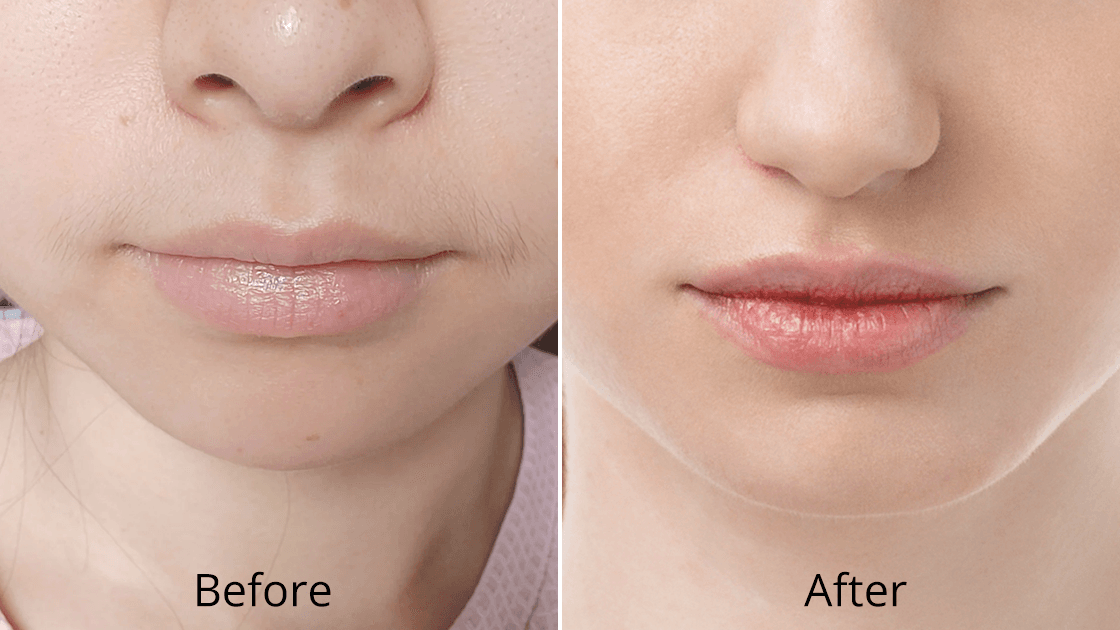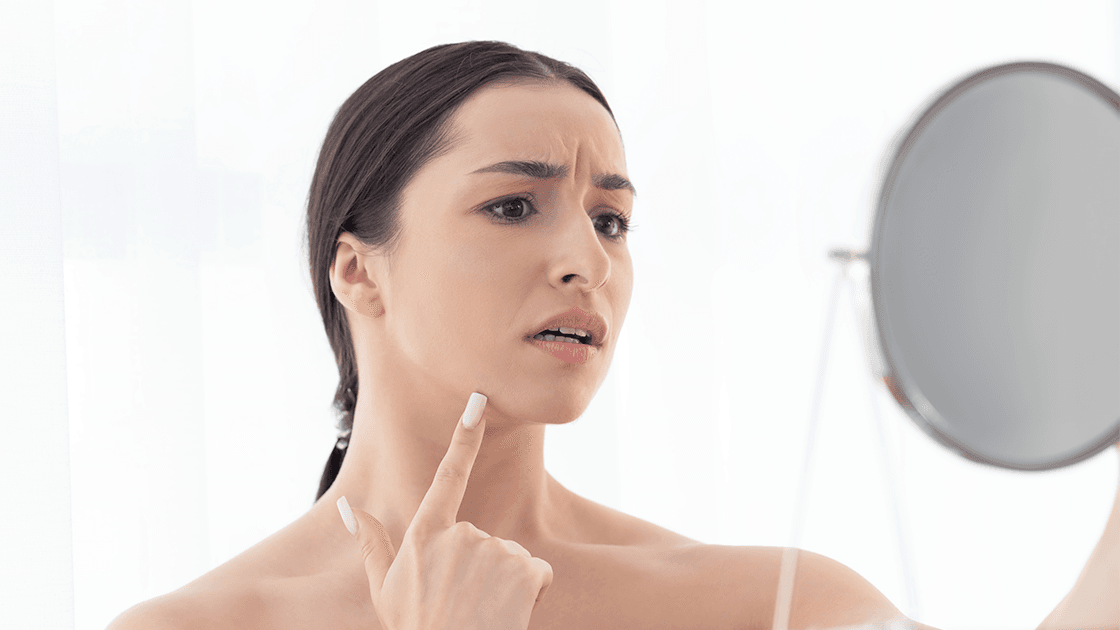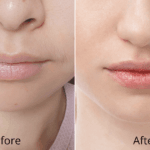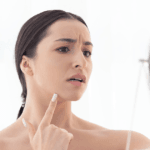1. Introduction: Why Aftercare Matters as Much as the Treatment
The success of any aesthetic laser procedure extends far beyond the treatment room. While advanced picosecond laser technology delivers remarkable results for ringiovanimento della pelle, pigmentation correction, and texture improvement, the post-treatment care protocol you follow in the critical first 72 hours can make the difference between optimal results and subpar outcomes.
1.1 What Is Pico Laser Treatment?
Picosecond laser technology represents a revolutionary advancement in dermatological treatments, utilizing ultra-short laser pulses measured in trillionths of a second. This sophisticated technology employs the photoacoustic effect, where rapid energy bursts create intense pressure waves that target pigments at the cellular level. The treatment typically utilizes dual wavelengths—532nm for superficial pigmentation concerns like solar lentigines and ephelides, and 1064nm for deeper dermal pigmentation such as melasma and post-inflammatory hyperpigmentation. The precision-focused targeting ensures effective melanin fragmentation while stimulating neocollagenesis through controlled thermal injury to the papillary dermis.
1.2 The Critical Role of Aftercare in Skin Healing and Results
Post-treatment care directly influences the wound healing cascade, cellular turnover, and ultimate treatment efficacy. Proper aftercare can significantly reduce downtime and improve healing, while following recommended protocols enhances the effectiveness of the Pico Laser treatment and promotes faster recovery. The skin’s inflammatory response, initiated by the laser’s photoacoustic effect, requires careful management to prevent complications such as post-inflammatory hyperpigmentation, prolonged erythema, or impaired barrier function. Optimal aftercare supports the skin’s natural repair mechanisms, maximizes collagen remodeling, and ensures consistent, predictable results across diverse skin phototypes.
1.3 What Is the 72-Hour Rule?
The 72-hour rule represents the critical window during which the skin undergoes its most vulnerable healing phase following picosecond laser treatment. This timeframe corresponds to the acute inflammatory response, characterized by vasodilation, increased vascular permeability, and heightened cellular activity. During these first three days, the skin’s barrier function is compromised, making it particularly susceptible to external irritants, UV radiation, and bacterial contamination. Adherence to specific aftercare protocols during this period determines the trajectory of healing, minimizes complications, and optimizes the photoacoustic treatment’s transformative effects on skin structure and appearance.
2. Understanding the First 72 Hours After Pico Laser
The immediate post-treatment period following picosecond laser therapy involves complex physiological processes that require careful monitoring and appropriate intervention. Understanding these mechanisms enables patients to anticipate normal healing responses while recognizing potential complications early.
2.1 Why the First 72 Hours Are Crucial
The first 72 hours post-treatment represent the peak of the inflammatory cascade initiated by the laser’s photoacoustic effect. During this period, the skin experiences maximum cytokine release, increased prostaglandin production, and heightened cellular metabolic activity. The compromised stratum corneum allows for increased transepidermal water loss (TEWL), while the inflammatory response can trigger melanocyte activation in susceptible individuals. This critical window determines whether the healing process proceeds along an optimal trajectory or develops complications such as prolonged inflammation, secondary infection, or aberrant pigmentation. Proper care during this phase ensures controlled inflammation resolution and supports the desired tissue remodeling process.
2.2 What Happens to Your Skin in the First 3 Days
The skin undergoes a predictable sequence of physiological changes following picosecond laser treatment. Initially, localized edema occurs due to increased capillary permeability, accompanied by erythema from vasodilation. Keratinocytes begin rapid proliferation to restore barrier function, while fibroblasts initiate collagen synthesis in response to the controlled thermal injury. The targeted melanin fragments undergo phagocytosis by macrophages and gradual elimination through the lymphatic system. Simultaneously, the skin’s natural exfoliation process accelerates, with possible mild desquamation occurring as damaged cells are replaced. These coordinated responses require adequate hydration, protection from external stressors, and careful monitoring to ensure optimal healing progression.
2.3 Immediate Reactions: Redness, Swelling, Sensitivity
Immediately after treatment, patients may notice redness, mild swelling, and tiny dark spots on the treated area, along with a tingling sensation, which typically subsides within 24 to 48 hours. The erythema results from acute vasodilation and inflammatory mediator release, while edema reflects increased vascular permeability in the treatment zone. Tactile hypersensitivity occurs due to temporary nerve ending irritation from the photoacoustic pressure waves. The appearance of punctate darkening, known as immediate pigment darkening (IPD), indicates successful target chromophore interaction. These reactions represent normal physiological responses to the controlled tissue injury and should gradually resolve as the inflammatory cascade subsides and normal barrier function is restored through organized wound healing processes.

3. Pico Laser Aftercare: What to Do (and Not Do)
Implementing a comprehensive aftercare protocol is essential for optimizing treatment outcomes while minimizing potential complications. The following evidence-based recommendations provide a framework for post-treatment care during the critical 72-hour period.
3.1 Essential Aftercare Steps
Proper aftercare involves a systematic approach to supporting the skin’s natural healing processes while protecting against potential complications. These fundamental steps form the foundation of successful post-treatment recovery.
3.1.1 Keep the Skin Cool and Clean
Gently cleanse the treated area twice a day with lukewarm water and a mild cleanser to prevent infection. Temperature regulation is crucial for managing the inflammatory response and preventing excessive vasodilation. Use tepid water (not exceeding 37°C) and a pH-balanced, fragrance-free cleanser with minimal surfactants to avoid barrier disruption. Pat dry with a clean, soft towel using gentle pressure to prevent mechanical trauma. Avoid rubbing or aggressive manipulation that could exacerbate inflammation or damage the compromised epidermis. Cool compresses using sterile saline or distilled water can provide symptomatic relief while reducing inflammatory mediator activity and limiting edema formation in the treatment zone.
3.1.2 Use Dermatologist-Approved Moisturizers
Apply a fragrance-free moisturizer to help soothe the treated area. Select occlusive and humectant-rich formulations containing ceramides, hyaluronic acid, or glycerin to restore barrier function and maintain optimal hydration levels. Avoid products containing potential sensitizers such as botanical extracts, essential oils, or high concentrations of preservatives that could trigger contact dermatitis. Apply moisturizer 2-3 times daily using gentle upward motions to support the skin’s natural healing process. The occlusive properties help reduce transepidermal water loss while creating a protective barrier against environmental irritants. Proper hydration supports cellular regeneration and minimizes the risk of excessive desquamation or prolonged barrier dysfunction.
3.1.3 Stay Hydrated Inside and Out
Systemic hydration plays a crucial role in supporting cellular repair mechanisms and optimizing treatment outcomes. Maintain adequate fluid intake (approximately 30-35ml per kilogram of body weight) to support lymphatic drainage and facilitate the elimination of fragmented pigment particles. Topical hydration through appropriate moisturizers and gentle misting with thermal spring water helps maintain optimal skin barrier function. Consider incorporating hydrating serums containing low molecular weight hyaluronic acid to penetrate the compromised barrier and provide deep tissue hydration. Adequate hydration supports collagen synthesis, accelerates wound healing, and reduces the likelihood of post-treatment complications such as excessive dryness or delayed recovery.
3.2 What to Avoid in the First 72 Hours
Certain activities and products can significantly impair the healing process or increase the risk of complications during the critical post-treatment period. Understanding these contraindications is essential for optimal recovery.
3.2.1 No Sun Exposure (Use SPF 50+ if needed)
Avoid sun exposure and use sunscreen to protect the skin and optimize results. UV radiation can trigger melanocyte activation, leading to post-inflammatory hyperpigmentation, particularly in skin phototypes III-VI. Even minimal sun exposure can compromise treatment outcomes and prolong the healing process. When outdoor activities are unavoidable, apply broad-spectrum sunscreen with SPF 50+ containing physical blockers (zinc oxide, titanium dioxide) rather than chemical filters that might cause irritation. Reapply every 2 hours and seek shade whenever possible. Consider protective clothing, wide-brimmed hats, and UV-protective eyewear to minimize exposure. The compromised barrier function makes the skin particularly vulnerable to photodamage during the initial healing phase.
3.2.2 Avoid Sweating and Exercise
Excessive perspiration can introduce bacteria to the compromised skin barrier while the elevated core temperature associated with vigorous exercise can exacerbate inflammation and prolong recovery. Sweat contains urea, lactate, and various salts that may irritate the sensitive post-treatment skin. Additionally, increased circulation from exercise can intensify erythema and edema in the treatment zone. Postpone high-intensity activities, hot yoga, saunas, and steam rooms for at least 72 hours post-treatment. Light walking or gentle stretching is acceptable, provided it doesn’t induce significant perspiration. The temporary activity restriction allows the inflammatory response to resolve naturally while preventing complications that could compromise treatment outcomes or extend the recovery period.
3.2.3 No Harsh Skincare Products (Retinoids, Acids, etc.)
The compromised post-treatment skin barrier cannot tolerate active ingredients that typically benefit healthy skin. Alpha hydroxy acids (AHAs), beta hydroxy acids (BHAs), retinoids, and vitamin C in high concentrations can cause severe irritation, prolonged inflammation, or chemical burns on the sensitized tissue. These ingredients can also interfere with the natural healing process and increase the risk of post-inflammatory hyperpigmentation. Suspend all active skincare ingredients for at least one week post-treatment, focusing instead on gentle, barrier-supporting products. Gradual reintroduction of active ingredients should only occur after complete healing is confirmed and normal skin barrier function is restored. This temporary modification prevents complications while allowing the skin to recover optimally.

4. Common Side Effects and When to Seek Help
Understanding the distinction between normal healing responses and concerning symptoms is crucial for patient safety and optimal treatment outcomes. Recognizing when professional intervention is necessary can prevent serious complications.
4.1 Normal vs. Abnormal Skin Responses
Normal post-treatment responses include mild to moderate erythema lasting 24-48 hours, slight edema that resolves within 2-3 days, and possible mild desquamation beginning 3-5 days post-treatment. Transient darkening of treated pigmented lesions followed by gradual lightening over 1-2 weeks is expected. Abnormal responses requiring immediate attention include severe or worsening erythema beyond 72 hours, significant edema with associated pain, persistent burning or stinging sensations, or development of vesicles or bullae. Asymmetric responses, sudden onset of severe symptoms, or signs suggesting infection warrant prompt professional evaluation. The distinction often relates to symptom severity, duration, and progression pattern rather than the presence of symptoms alone.
4.2 When Redness Becomes a Rash
While erythema is expected following picosecond laser treatment, the development of a true rash indicates an abnormal inflammatory response requiring intervention. Normal erythema appears uniform, gradually fades, and responds to conservative measures such as cool compresses. Pathological responses manifest as raised, pruritic lesions, asymmetric distribution, or spreading beyond the treatment zone. Contact dermatitis may develop from inappropriate post-care products, while urticarial reactions suggest possible allergic responses. Petechial or purpuric changes could indicate vascular injury requiring assessment. Any rash accompanied by systemic symptoms, progressive worsening after 48 hours, or failure to respond to conservative treatment should prompt immediate dermatological consultation to prevent progression to more serious complications.
4.3 Signs of Infection or Allergic Reaction
Secondary bacterial infection can occur when the compromised skin barrier is exposed to pathogenic organisms. Warning signs include increasing pain, warmth, and erythema extending beyond the treatment area, purulent discharge, red streaking, or systemic symptoms such as fever and malaise. Staphylococcal or streptococcal infections require prompt antibiotic therapy to prevent cellulitis or deeper tissue involvement. Allergic reactions may manifest as urticaria, angioedema, or contact dermatitis with vesiculation and weeping. Severe allergic responses can include respiratory symptoms or circulatory compromise requiring emergency treatment. Any concerning symptoms, particularly those suggesting systemic involvement or progressive local deterioration, necessitate immediate medical evaluation to prevent serious complications and ensure appropriate therapeutic intervention.
5. Enhancing Results Beyond Day 3
The post-72-hour period marks the transition from acute healing to the remodeling phase, where strategic interventions can optimize long-term treatment outcomes and support continued skin improvement.
5.1 When to Resume Active Skincare (AHAs, Retinoids, Vitamin C)
The effects of Pico laser therapy start becoming noticeable within 2 to 4 weeks post-treatment, reaching their peak between the 10th and 16th week. Active skincare ingredient reintroduction should coincide with complete barrier restoration, typically 7-14 days post-treatment depending on individual healing patterns. Begin with lower concentrations and alternate-day application to assess tolerance. Vitamin C (L-ascorbic acid or magnesium ascorbyl phosphate) can be reintroduced first at 10-15% concentration to support collagen synthesis and provide antioxidant protection. Retinoids should follow 2-3 weeks post-treatment, starting with retinyl palmitate before progressing to tretinoin if tolerated. AHAs and BHAs require the most caution, reintroducing at 5-8% concentrations with careful monitoring for irritation. This graduated approach maximizes synergistic benefits while minimizing the risk of adverse reactions during the continued healing process.
5.2 Light Makeup Use: Safe or Not?
Patients can apply light makeup to the treated areas the next day. Mineral-based cosmetics containing zinc oxide or titanium dioxide provide both coverage and sun protection while being less likely to cause irritation than conventional makeup. Avoid liquid foundations with high coverage or long-wearing formulations that may clog pores or require aggressive removal. Choose products labeled as non-comedogenic, hypoallergenic, and fragrance-free to minimize the risk of contact sensitivity. Apply using clean brushes or disposable applicators to prevent bacterial contamination. Remove makeup gently with micellar water or oil-based cleansers followed by gentle cleansing. The key is selecting appropriate products and application techniques that provide psychological benefits without compromising the healing process or introducing potential irritants to the recovering skin.
5.3 How to Maximize Collagen Production Naturally
Pico Laser stimulates collagen and improves skin texture contributing to a radiant and youthful appearance. Supporting the laser-induced collagen synthesis requires a multifaceted approach combining topical interventions with lifestyle modifications. Incorporate vitamin C serums (15-20% L-ascorbic acid) to provide cofactor support for collagen hydroxylation. Peptide-containing products can signal continued fibroblast activation and matrix protein production. Ensure adequate protein intake (0.8-1.2g per kilogram body weight) providing essential amino acids for collagen synthesis. Consider supplementation with vitamin C (500-1000mg daily), vitamin E (400IU), and zinc (15mg) to support wound healing and collagen formation. Maintain consistent sleep patterns (7-9 hours nightly) as growth hormone release during deep sleep phases supports tissue repair and regeneration processes initiated by the laser treatment.

6. Long-Term Pico Laser Maintenance
Maintaining and enhancing picosecond laser results requires a strategic approach to treatment scheduling, ongoing skincare, and lifestyle modifications that support long-term skin health and appearance.
6.1 How Often Should You Repeat Treatments?
We recommend attending 3-4 maintenance sessions, timed 4 weeks apart from each other, with darker complexions potentially requiring up to 8 weeks between appointments. Treatment frequency depends on individual skin characteristics, specific concerns being addressed, and treatment goals. For pigmentation correction, initial series typically involve 3-6 sessions spaced 4-6 weeks apart to allow complete healing and pigment elimination between treatments. Skin rejuvenation protocols may require 4-8 sessions with similar intervals to achieve optimal collagen remodeling. Maintenance treatments every 6-12 months help sustain results and address new signs of aging or environmental damage. Skin phototype significantly influences scheduling, with darker skin types requiring longer intervals to prevent post-inflammatory hyperpigmentation. Individual response varies, necessitating personalized treatment plans based on healing patterns, treatment tolerance, and desired outcomes.
6.2 Recommended Skincare Between Sessions
Intersession skincare should focus on maintaining treatment gains while preparing the skin for subsequent procedures. Establish a consistent routine incorporating gentle cleansing with pH-balanced products, daily broad-spectrum SPF 50+ sunscreen application, and barrier-supporting moisturizers containing ceramides or niacinamide. Introduce vitamin C serums (15-20% concentration) to support continued collagen synthesis and provide antioxidant protection. Consider retinoid therapy (tretinoin 0.025-0.05%) 2-3 times weekly to enhance cellular turnover and treatment penetration. Alpha hydroxy acids (8-12% glycolic acid) used 2-3 times weekly can maintain exfoliation and improve product absorption. Avoid over-exfoliation or aggressive treatments that could compromise skin barrier function. Regular professional consultations help monitor progress, adjust protocols, and ensure optimal skin preparation for subsequent laser sessions.
6.3 Building a Custom Laser-Ready Routine
Developing a personalized skincare regimen optimizes treatment outcomes while maintaining skin health between procedures. Begin with a comprehensive skin analysis to identify specific concerns, phototype, and sensitivity patterns. Morning routines should emphasize protection: gentle cleanser, antioxidant serum (vitamin C or niacinamide), moisturizer with barrier-supporting ingredients, and broad-spectrum sunscreen. Evening protocols focus on repair and preparation: double cleansing if wearing makeup or sunscreen, active ingredients (retinoids, AHAs) on alternating nights, and intensive moisturization. Weekly treatments might include gentle enzyme masks or professional-grade chemical peels as appropriate for skin tolerance. Quarterly professional evaluations ensure routine optimization and early identification of new concerns. The goal is creating sustainable habits that enhance laser treatment efficacy while maintaining optimal skin health and appearance long-term.
7. FAQs: Quick Answers to the Most Searched Questions
You can gently wash your face 4–6 hours post-treatment using lukewarm water and a mild, fragrance-free cleanser. Avoid scrubbing, hot water, or harsh devices. Pat dry with a clean towel. Return to your normal routine after 48–72 hours, but continue avoiding active ingredients for the first week.
You can go outside immediately if using strong sun protection—broad-spectrum SPF 50+, a wide-brim hat, and protective clothing. Avoid direct sunlight for at least one week to reduce risk of hyperpigmentation. Consistent sun protection is critical, especially for darker skin tones.
Mild flaking or dryness may occur 3–7 days post-treatment. It’s a normal part of the healing process and typically light due to the non-ablative nature of pico lasers. Don’t pick at the skin—use gentle moisturizers to support natural exfoliation.
Yes—moisturizer is essential after treatment. Start applying a gentle, fragrance-free product with ceramides or hyaluronic acid within a few hours. Reapply 2–3 times daily to reduce dryness and support skin barrier repair. Avoid anything with alcohol or strong fragrances.
There are no strict dietary rules, but it’s best to avoid alcohol and spicy foods for a few days. Focus on antioxidant-rich foods, vitamin C, and hydration to support healing. A nutrient-dense diet helps promote collagen production and reduce inflammation.
8. Conclusion: Respect the 72 Hours—Your Skin Will Thank You
The first 72 hours after Pico Laser treatment are crucial for optimal healing and long-term results. This window marks the beginning of inflammation control, tissue regeneration, and collagen stimulation—all requiring gentle, supportive care. The laser’s photoacoustic effect jumpstarts skin renewal, but without proper aftercare, these benefits can be compromised. Respecting the 72-hour rule means more than avoiding the sun or harsh products. It involves consistent hydration, gentle cleansing, barrier-repair moisturizers, and awareness of warning signs like infection or allergic reactions. These simple actions significantly improve recovery and enhance treatment outcomes. Every skin type heals differently, so working closely with your provider ensures personalized support. By following evidence-based aftercare, you help your skin rebuild stronger, smoother, and more radiant. The results you see weeks later will reflect the care you provided during those first three days—your skin truly will thank you.
9. Riferimenti e fonti cliniche
- Il laser Pico è il segreto per una pelle più liscia
- Un aggiornamento sul trattamento laser frazionato a picosecondi: istologia e applicazioni cliniche
- A Systematic Review of Picosecond Laser in Dermatology: Evidence and Recommendations
- Use of a Picosecond Pulse Duration Laser With Specialized Optic for Treatment of Facial Acne Scarring
- Picosecond Laser-Induced Photothermal Skin Damage Evaluation by Computational Clinical Trial








